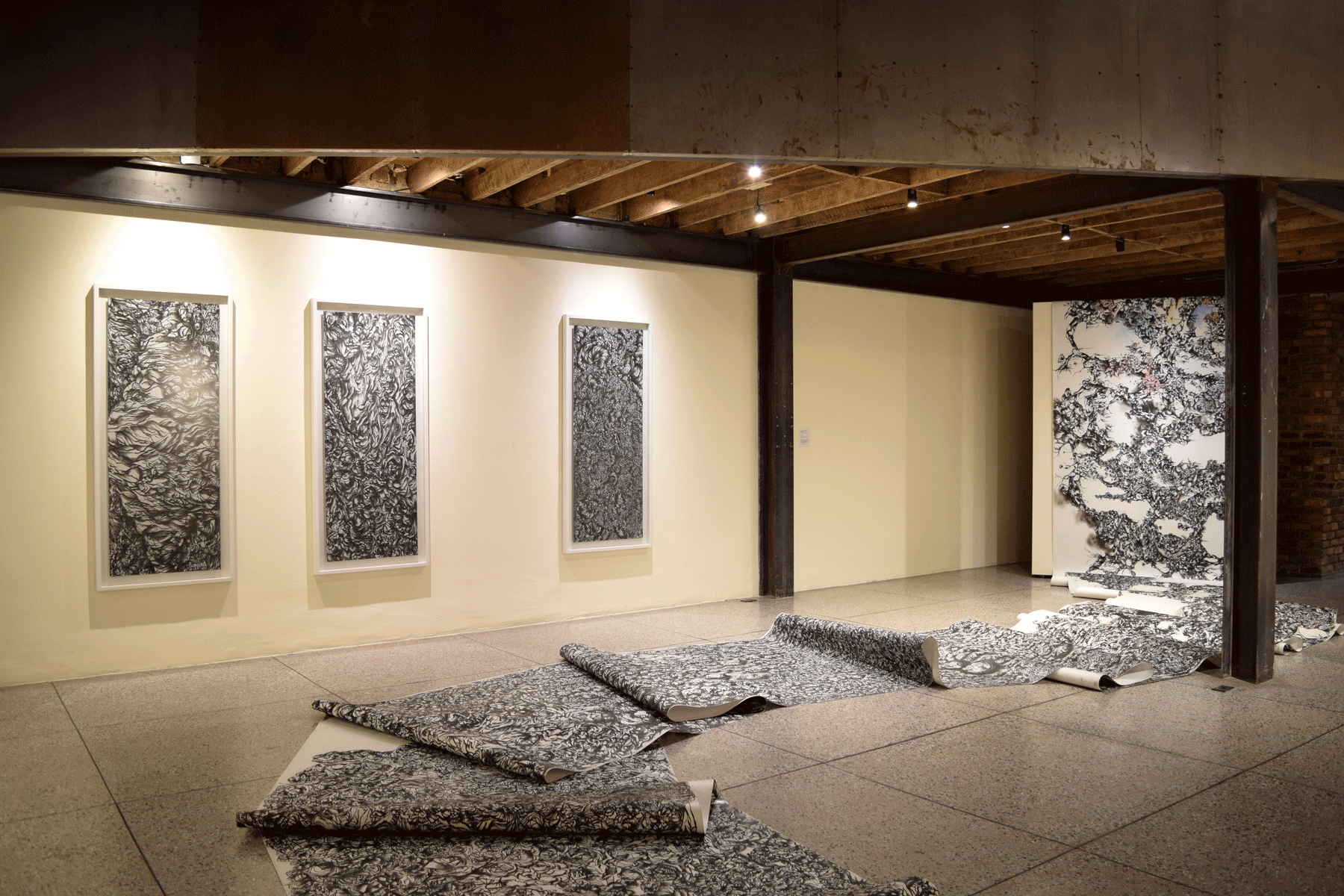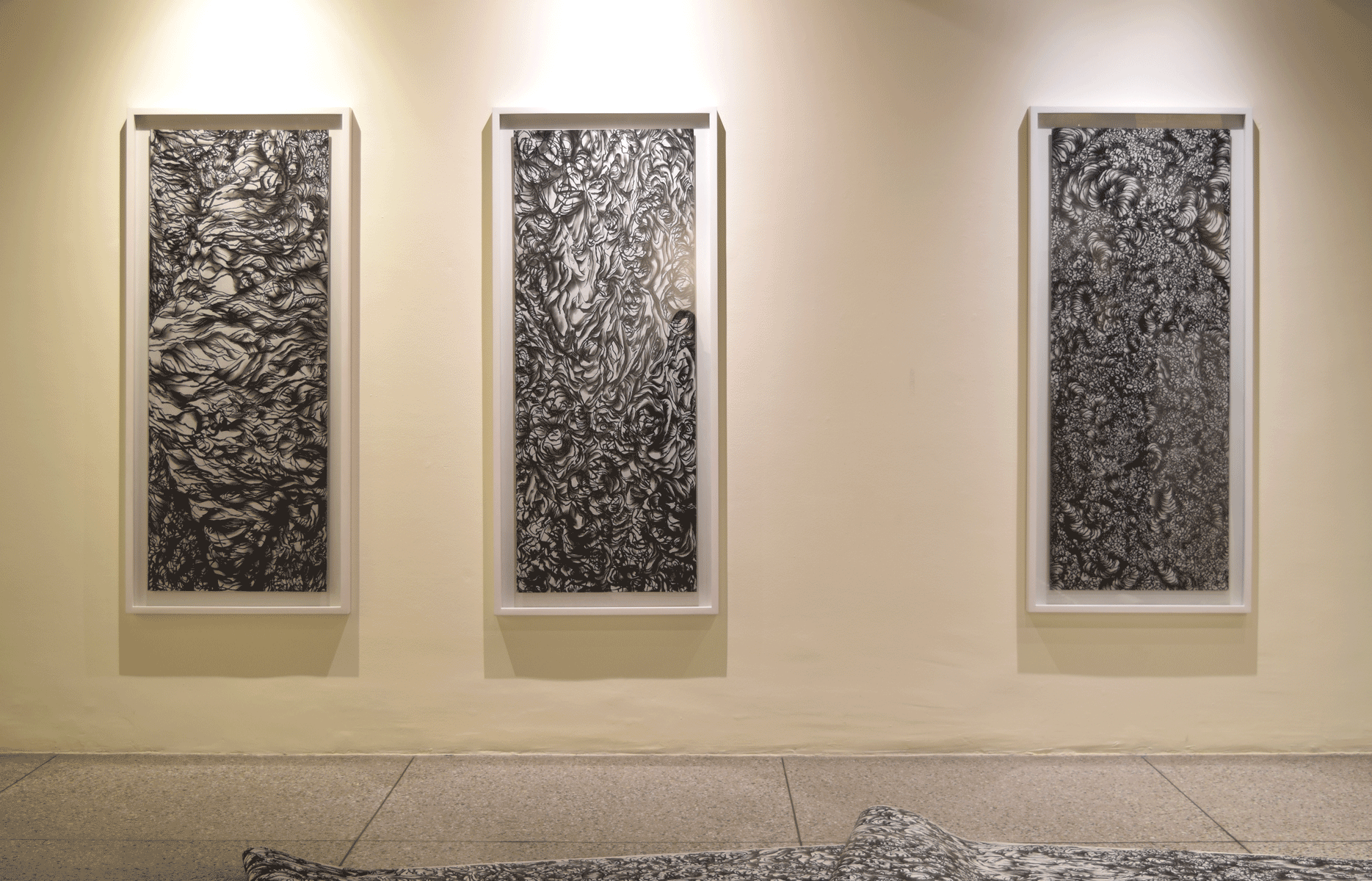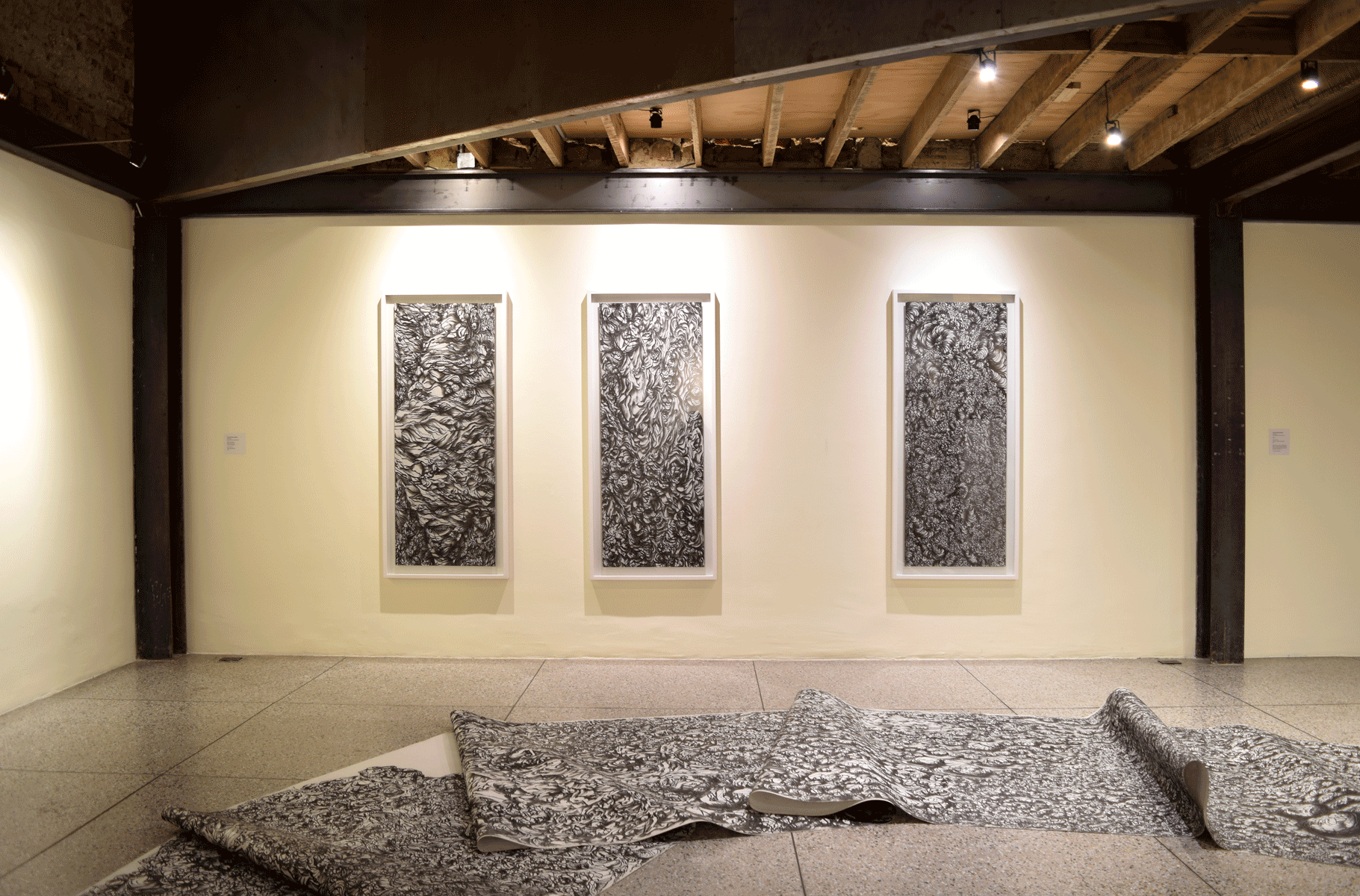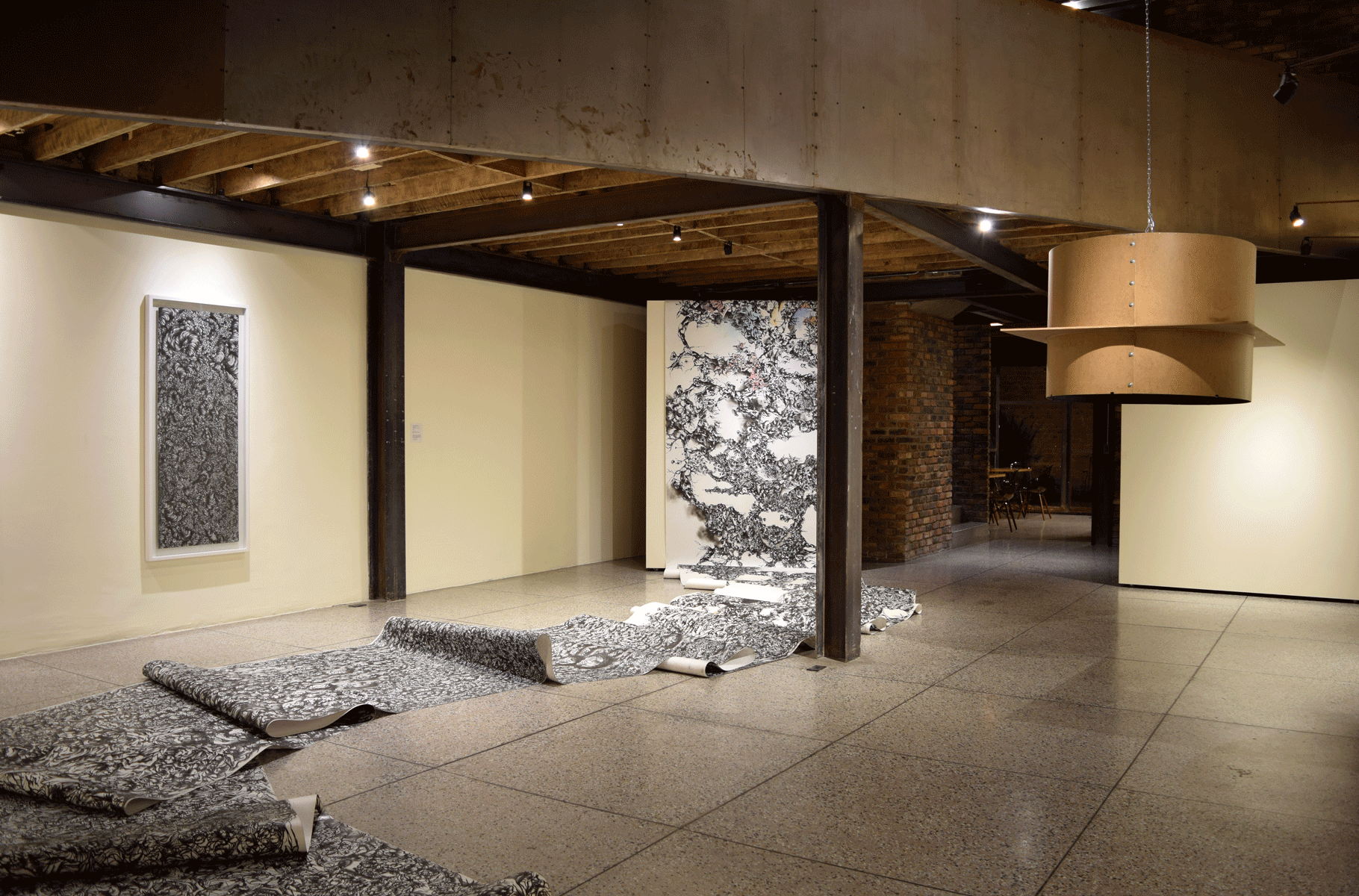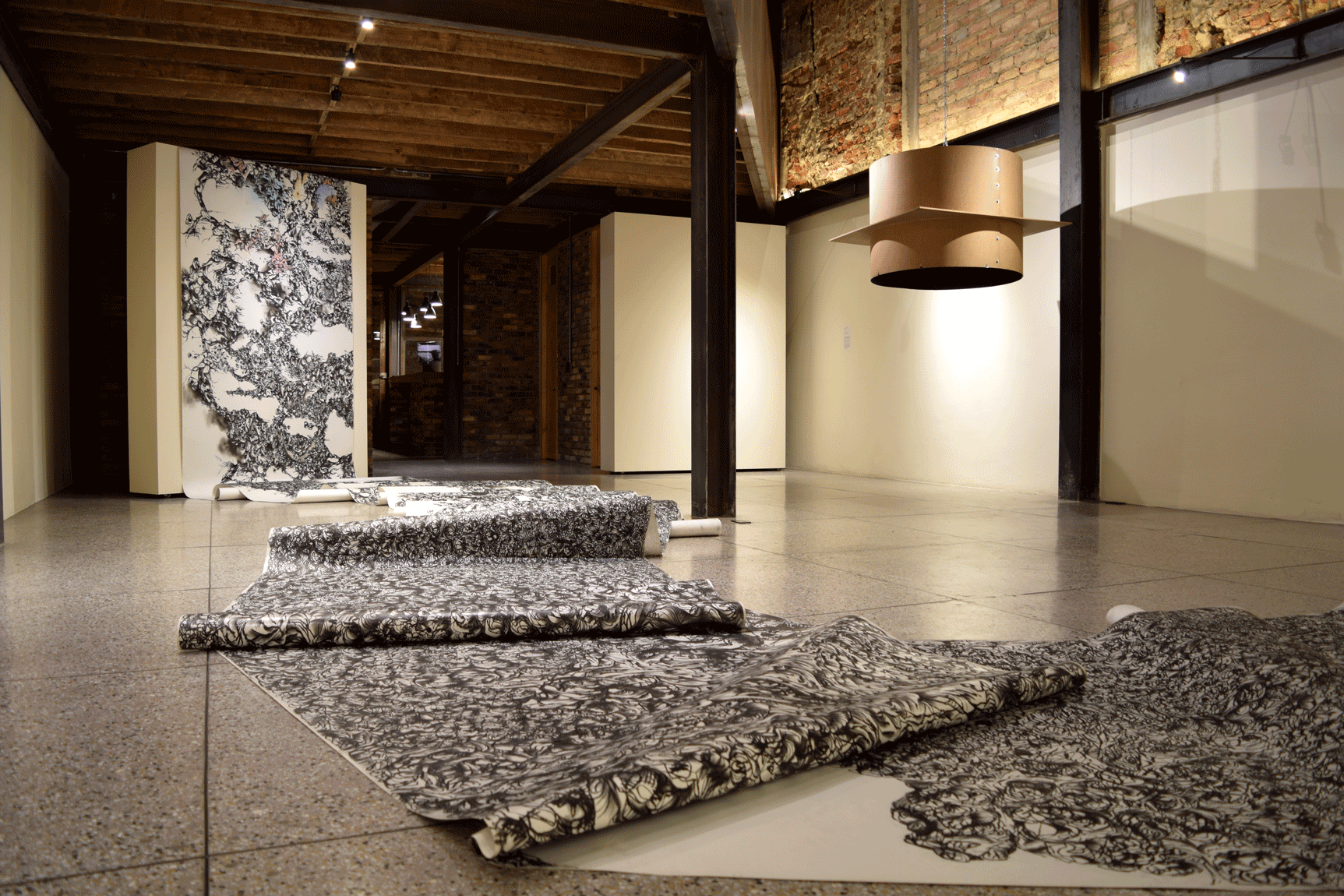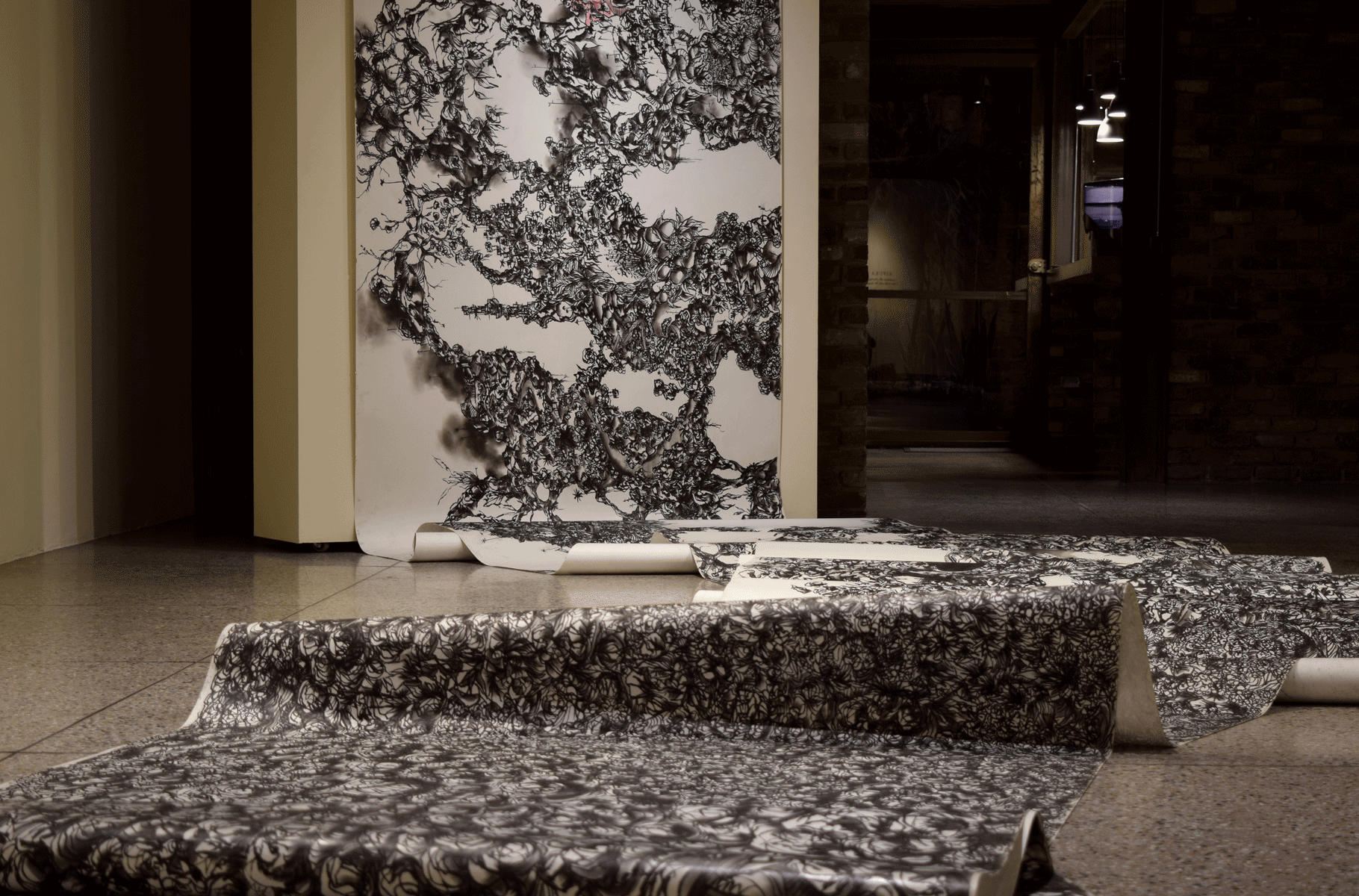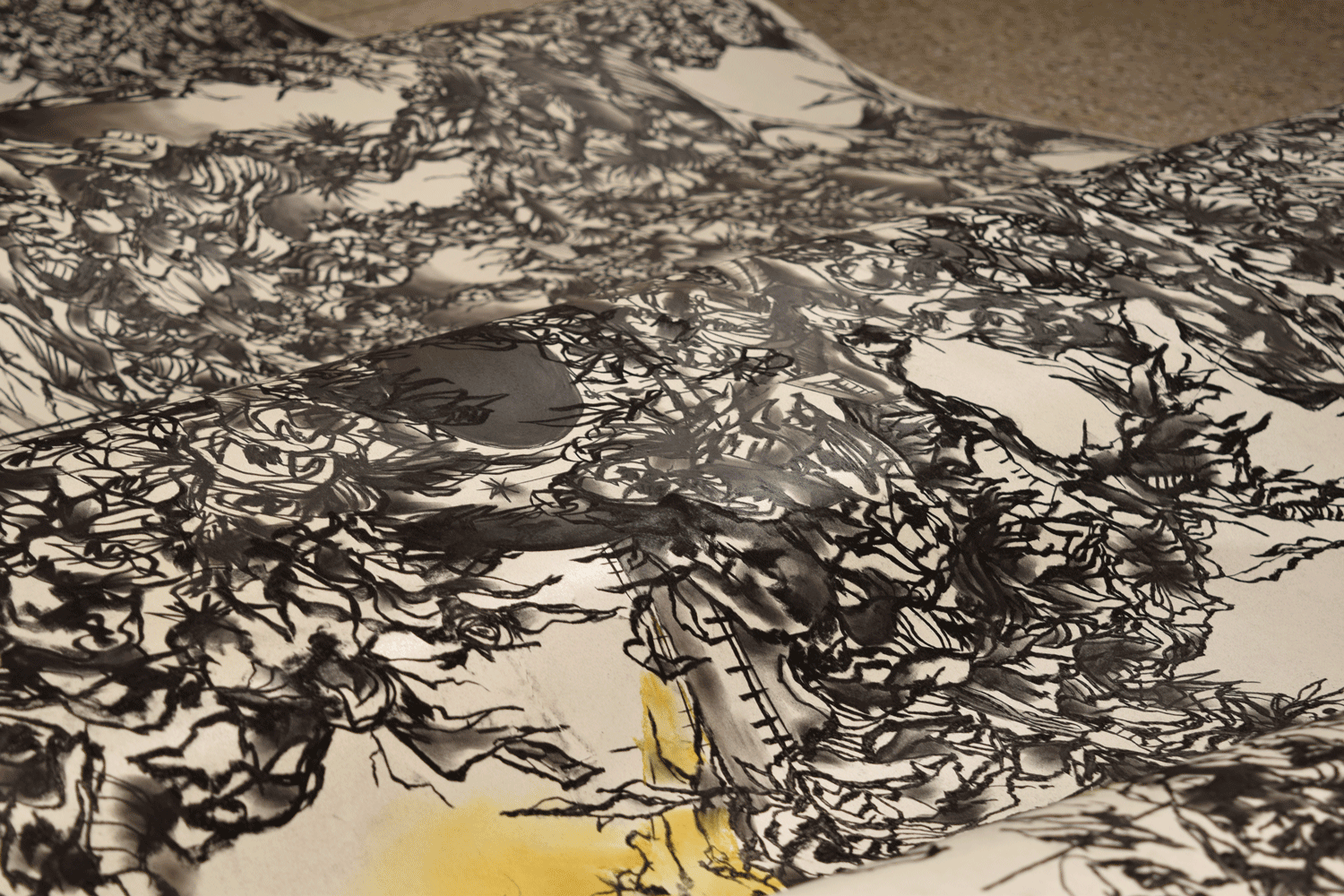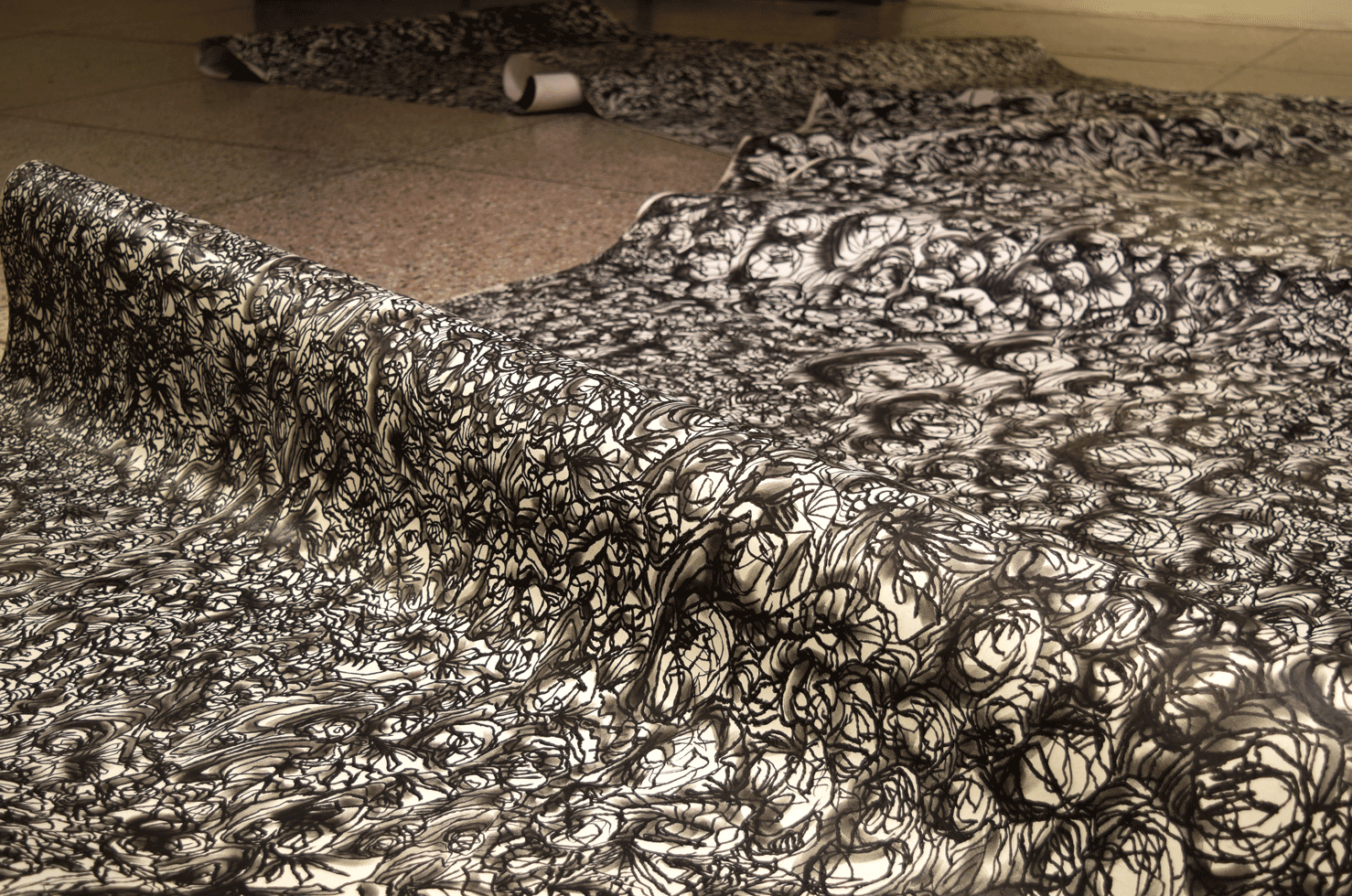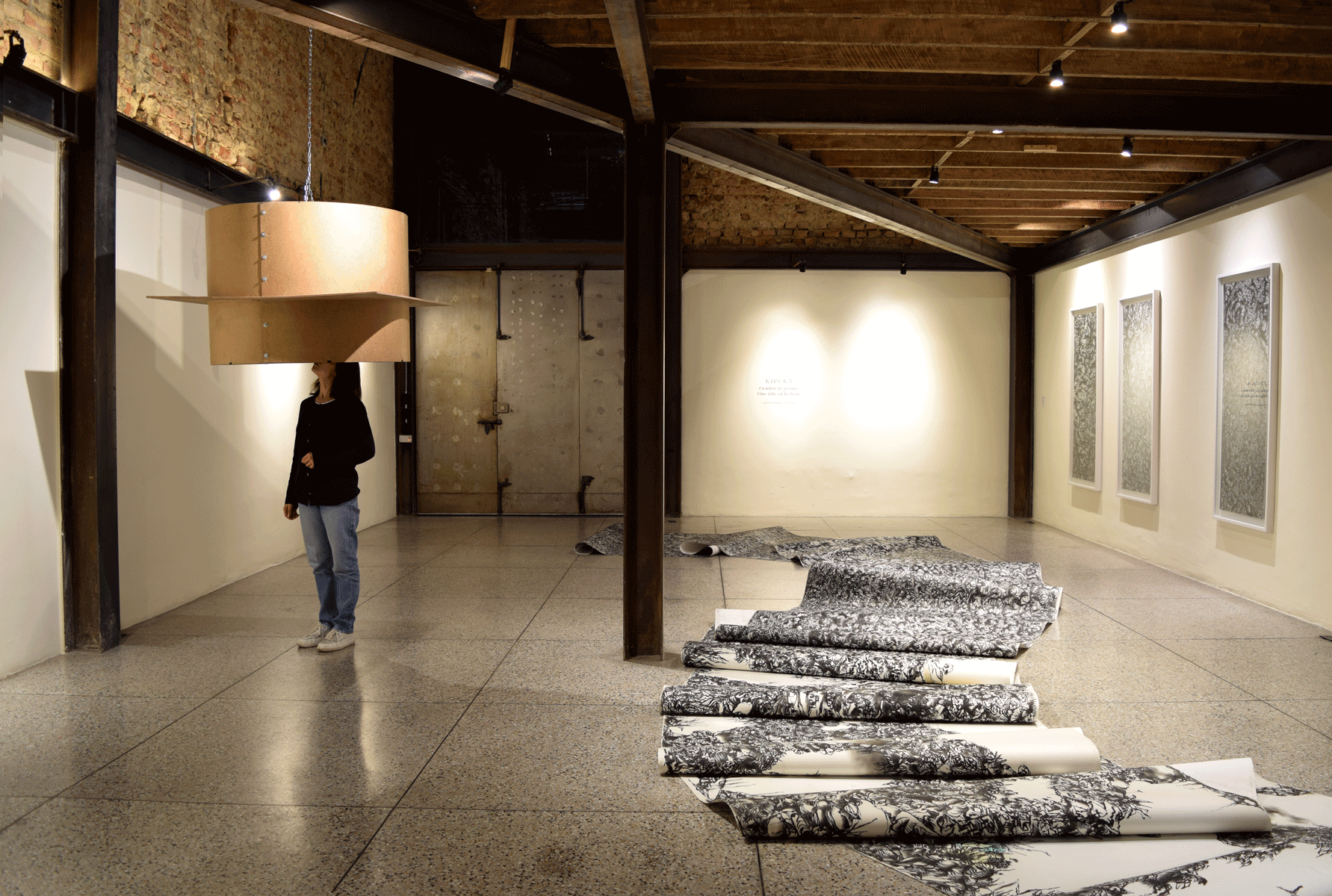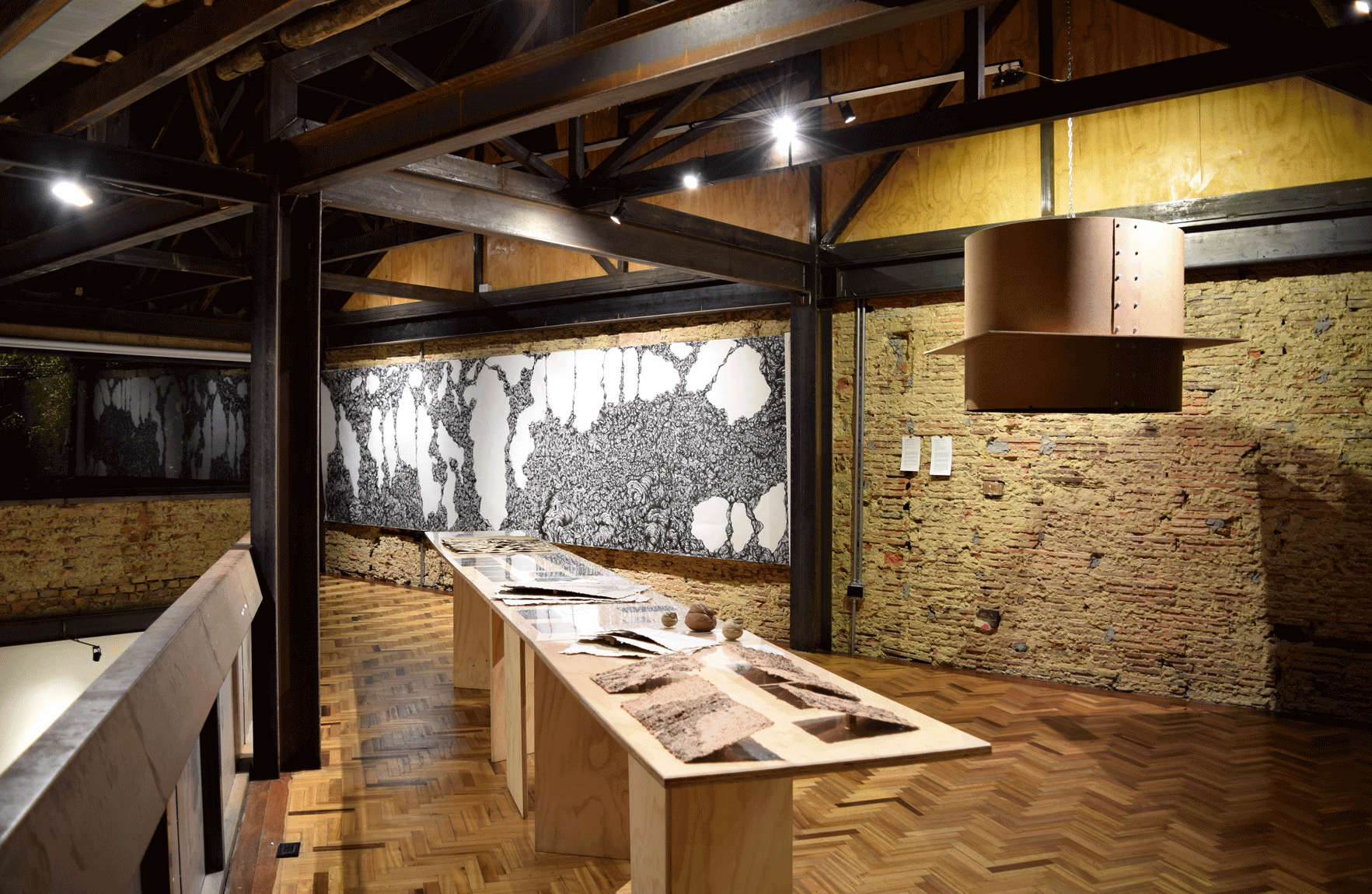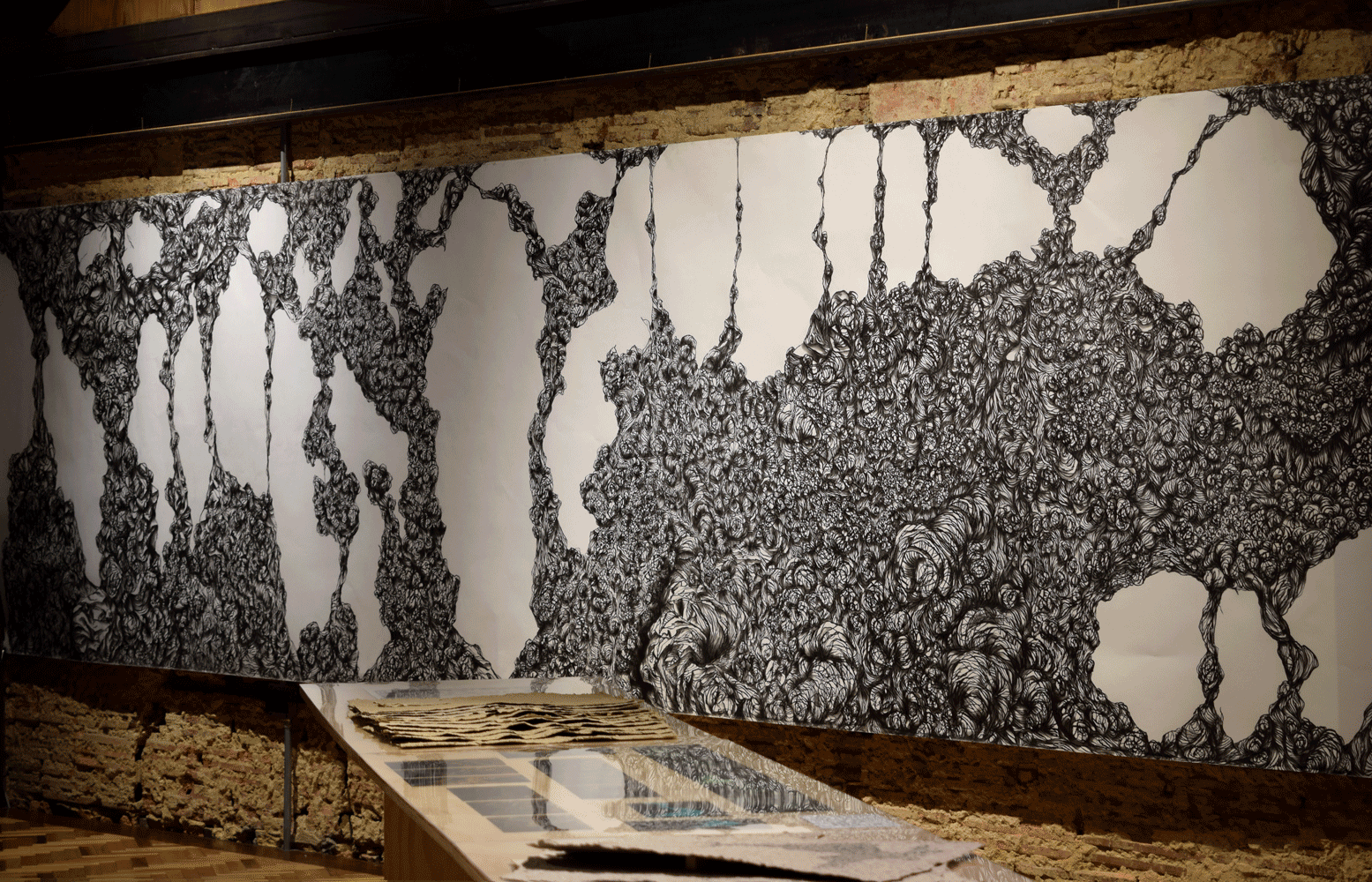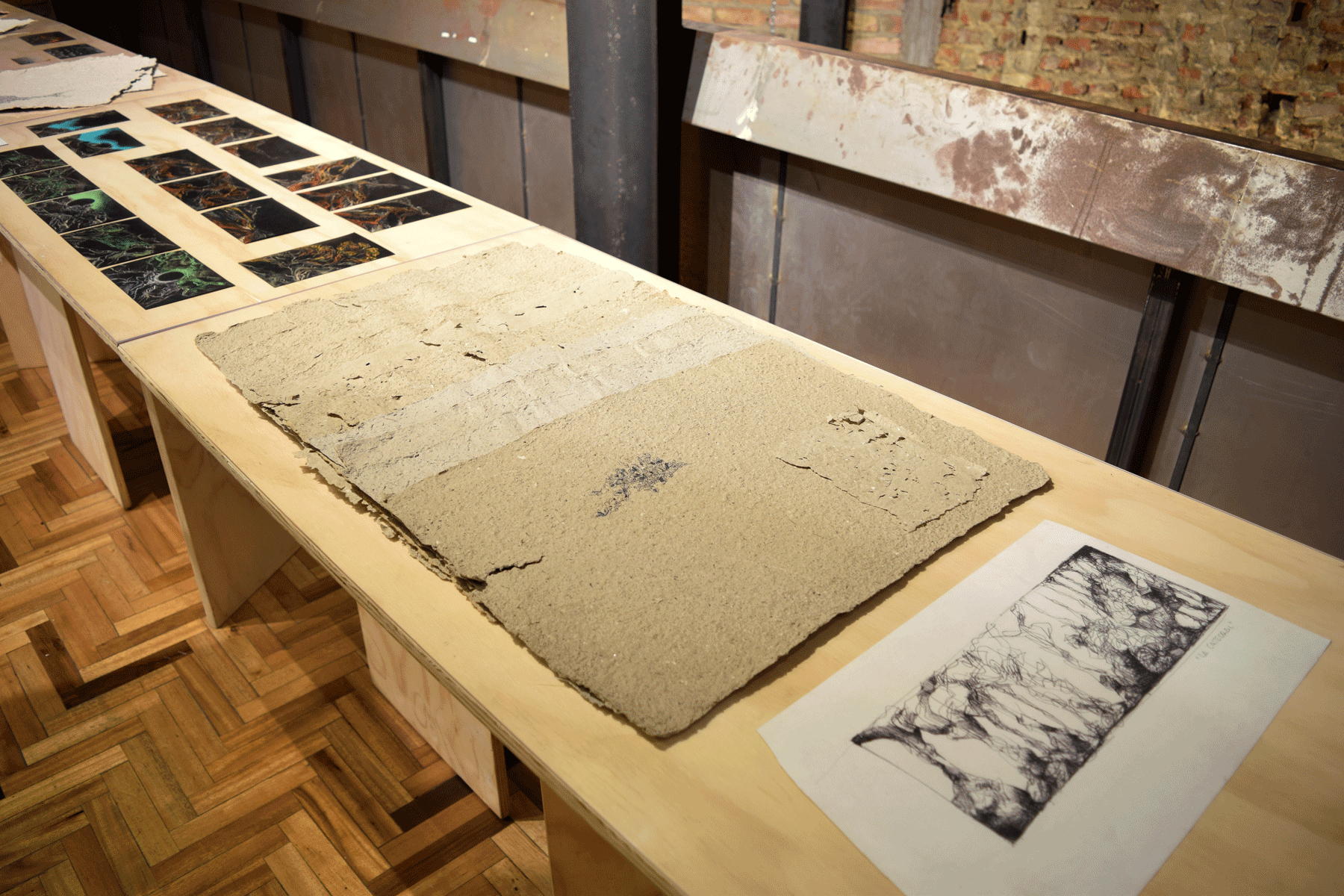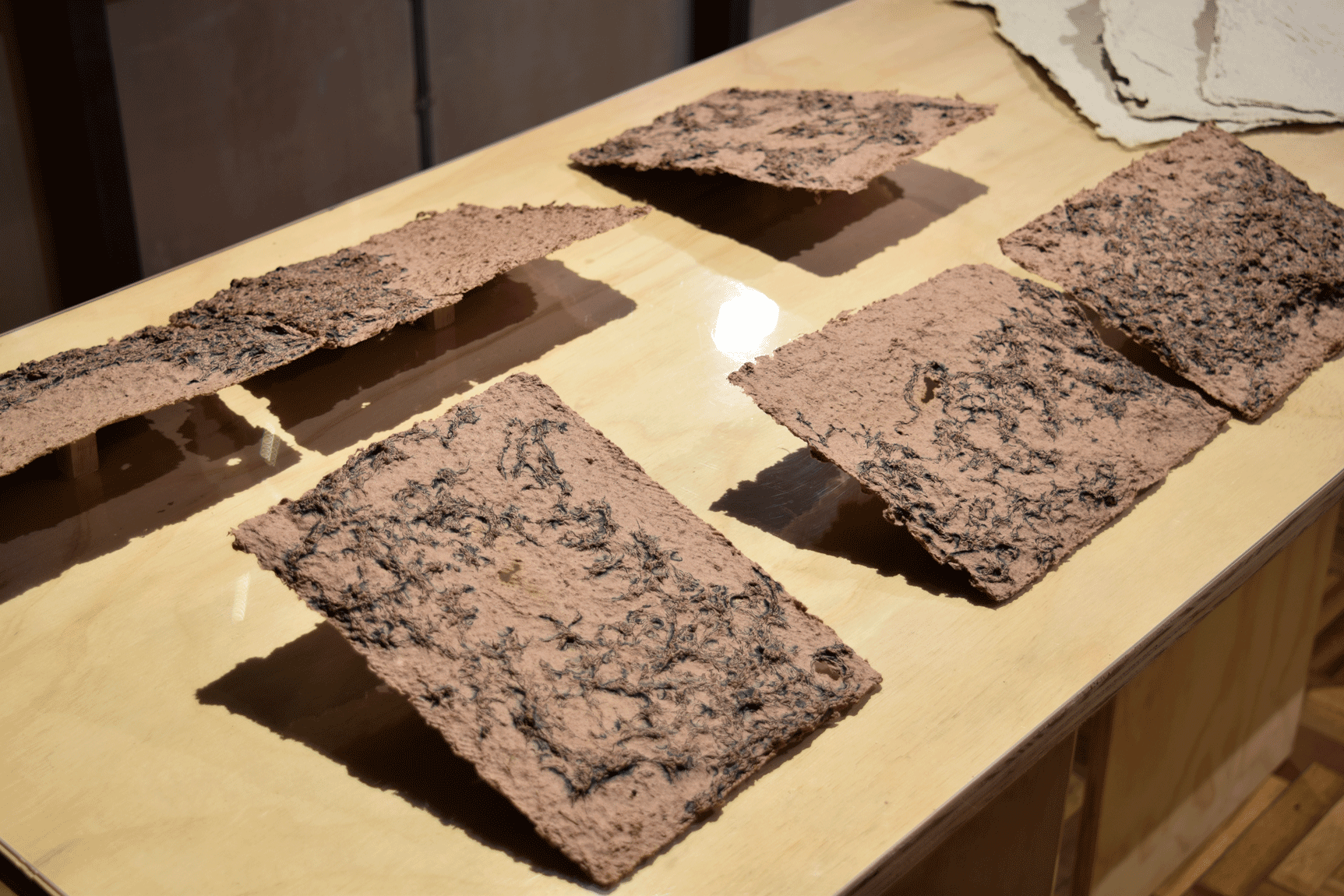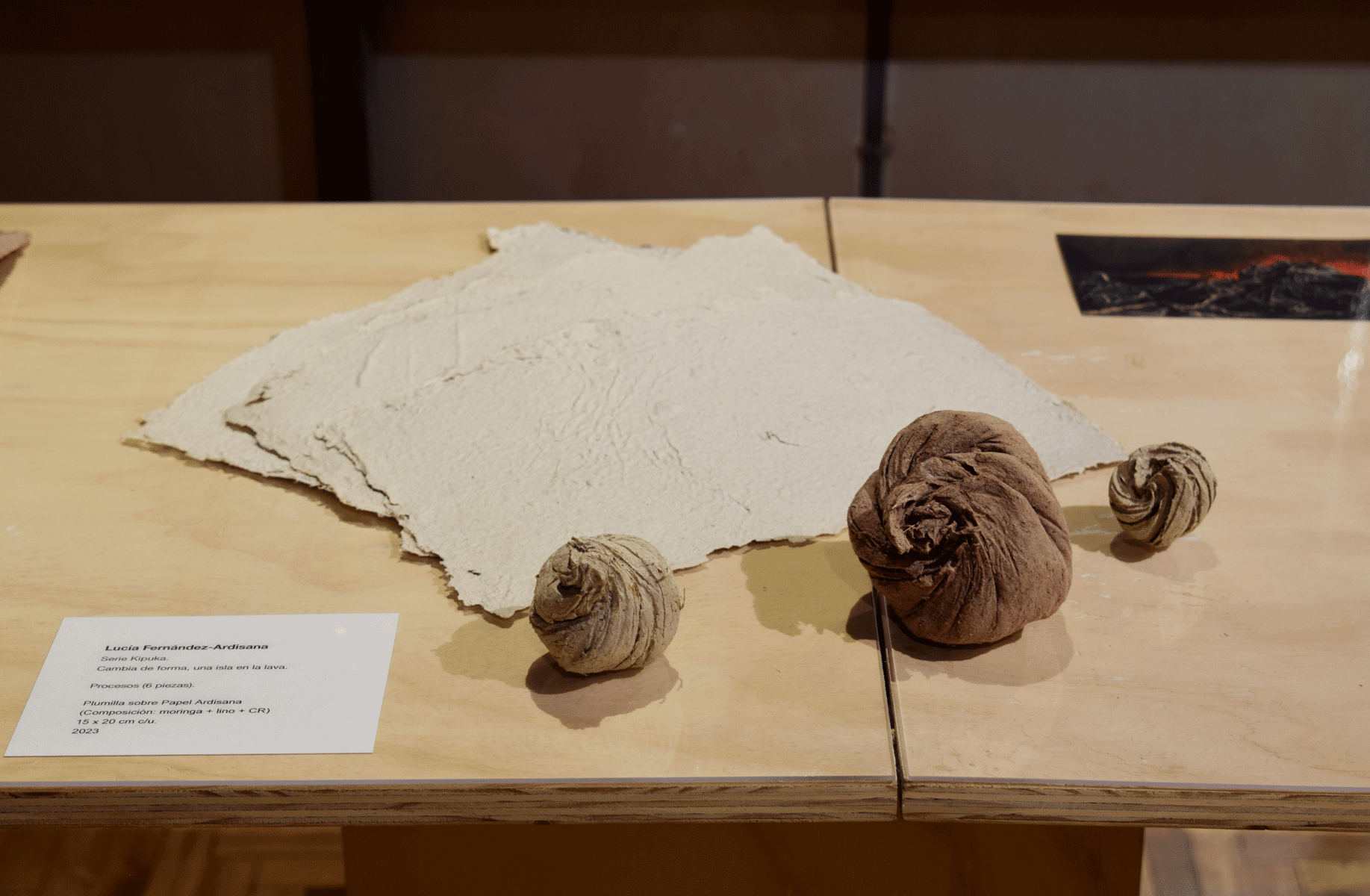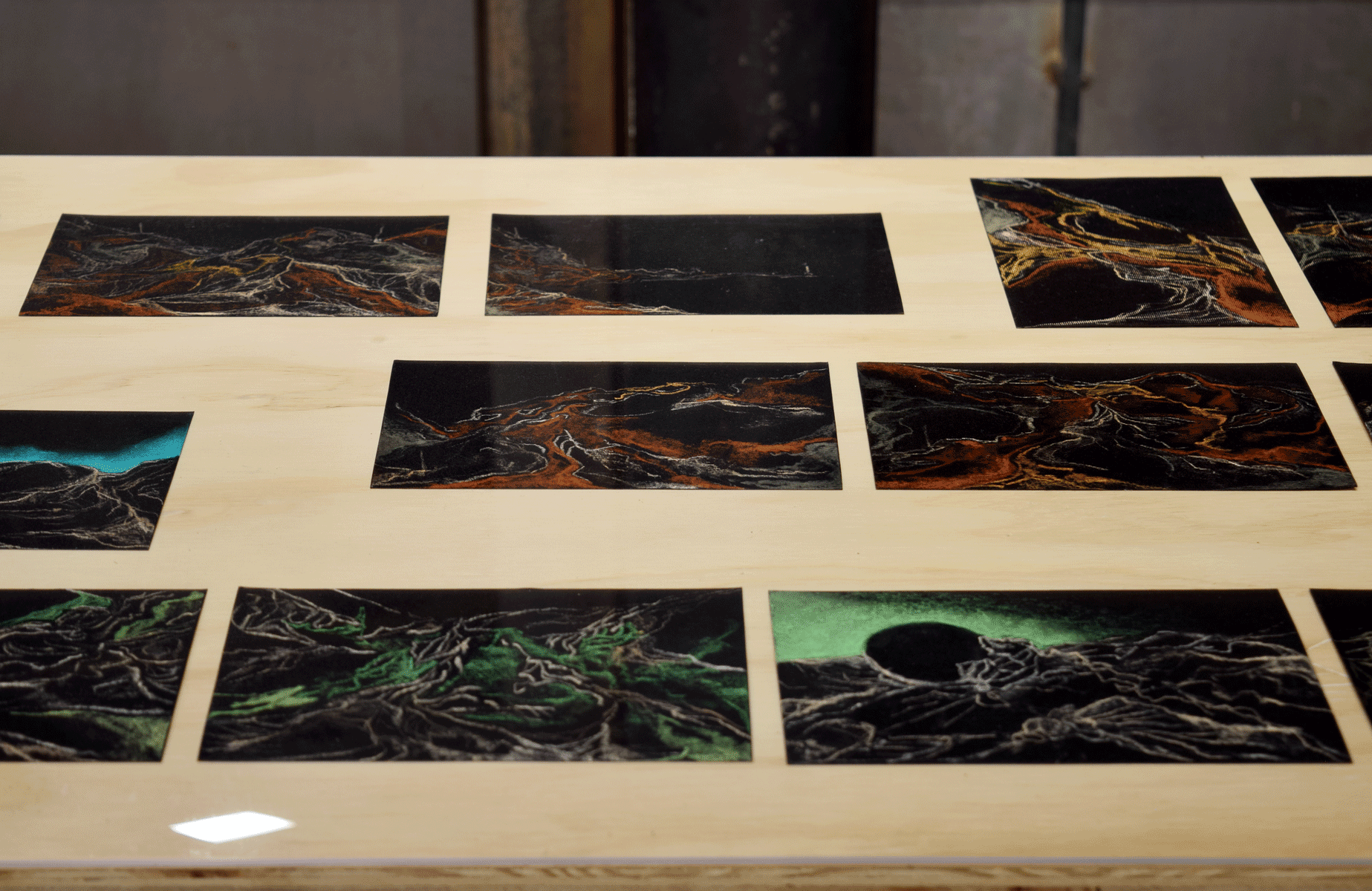KIPUKA. Shape-shifts. An island in the lava – Lucía Fernández-Ardisana.
Kipuka is a term originating from Hawaii, meaning "opening" and "shape-shift." It is coined for land portions surrounded by lava flows after a volcanic eruption, becoming subjects of study. Due to the isolation caused by lava, the species enclosed there are forced to evolve in different ways for survival. This concept, discovered by artist Lucía Fernández-Ardisana during the observation of the eruption of La Palma Island (Canaries, Spain) between September 19 and December 13, 2021 [1], branches into four concepts: separation, isolation, origin, and change. These concepts are fundamental to understanding a body of work focused on drawing, initiated in parallel with the island's eruption, and culminating two years later in the solo exhibition presented at Plural.
The experience of a natural phenomenon, such as a strong earthquake or a flood, reminds us of our fear of the unpredictable and the uncontrollable. These factors disrupt established patterns and structures, urging us to reconsider our belief system. Lucía Fernández-Ardisana's artistic background had a strong classical and academic component, primarily leaning towards the figurative and the recognizable. Continuous observation of the La Palma island eruption and the free flow of lava tongues over the territory prompted a crucial question: Can a drawing be free? This curiosity immediately highlights two things: first, that freedom is an exercise manifested in the sudden, the organic, the uncontrollable; and second, that the principles learned during the early years of her artistic education represent the territory of the known, forming a clear and seemingly solid structure that she hadn't thought possible to doubt.
Challenging the fear of departing from the known, the artist willingly and consciously delves into a project that seeks to deconstruct norms. This begins with a 21-meter drawing, with its only limits being the boundaries of the format. This drawing becomes possible due to the global isolation declared during the Covid-19 pandemic. However, it is no different from the self-imposed isolation an artist experiences in their studio during the creation of a work.
In this initial drawing titled Kipuka, the first three meters reveal identifiable forms like houses, streets, and palm trees, even hints of color. However, as the effort to free the stroke from the figurative progresses, the line takes on its own entity, forming an organic and frenetic mass developed solely in charcoal, seemingly eager to overflow the paper's limits. Once the drawing is "liberated," the artist concurrently creates other pieces like Movements 1, 2, and 3, which can be seen as extracts from those loose and unknown forms generated in Kipuka. Additionally, Jameo and Basalto [2] form an installation of two three-meter-long works each, placed within circular structures, inviting the viewer to complement the immersive experience of a continuous drawing idea that never stops.
Further explorations are presented on a table dedicated to processes accompanying the execution of large-format drawings. Here, you can appreciate sketches, small strokes evoking geographical accidents caused by an eruption, as well as the artist's recent experiments with handmade paper. While these experiments materialize the organic masses achieved in previous pieces, intervention with ink to highlight their forms continues to evoke various sensations under the same drawing concept.
The project culminates with La Catedral, a 6.18-meter-long drawing whose title and suggestive pillar-like forms allude to the succession of layers that must be unveiled to reach the primal place each species heads towards in a decisive stage: the origin. La Catedral is a space that, in its connotations, invites introspection and reflection, crucial actions to discover that first layer where we can observe ourselves in essence, unambiguously, both in our unity and totality. It seems that this is where change can be fostered.
– Andrea Muñoz (Director and curator).
_________________________________
[1]
The volcanic eruption on La Palma between September 19 and December 13, 2021, is the longest eruption recorded in the island's history and the third in the entire archipelago. It occurred in a new vent on the geological feature of Cumbre Vieja Dorsal, where different volcanic cones already exist. This new vent was named Tajogaite Volcano, an aboriginal name for Montaña Rajada, reflecting the area of the eruption known as Hoya de Tajogaite.
[2]
Jameo (Possibly from the Guanche xam 'house, hut', 'shop'.) 1. m. In the Canary Islands, a natural cavity or cave formed by the collapse of the roof of a volcanic lava tube.
Basalto (From Latin basaltes.) 1. m. Volcanic rock, usually black or greenish, fine-grained, very hard, composed mainly of feldspar and pyroxene or augite, and sometimes prismatically structured.
_________________________________
About Lucía Fernández-Ardisana.
Lucía Fernández-Ardisana is an artist born on the island of Tenerife (Canaries, Spain), who moved to Bogotá, Colombia, in late 2018. She received training in Fine Arts in the workshop of Master Felipe Hodgson Rabina in Santa Cruz de Tenerife. The concepts embraced in her work are oriented towards the natural models inherent to the Canary Islands, involving a meticulous and delicate observation of how landscape and territory are destroyed and configured, establishing a relationship between natural phenomena and human behavior.
18.11.2023 - 10.02.2024
KIPUKA. Shape-shifts. An island in the lava – Lucía Fernández-Ardisana.
Organized by:
Andrea Muñoz (Director and Curator), Estey Ducuara (Exhibition Design Support), Estey Ducuara and Yeremy Vega (Assembly), Taller Agosto (Design and Layout, Jose Ricardo Contreras (Audiovisual Producer).
Artist:
Lucía Fernández-Ardisana
KIPUKA. Shape-shifts. An island in the lava – Lucía Fernández-Ardisana. Makes part of the curatorial axis
2023 - Phototropism


